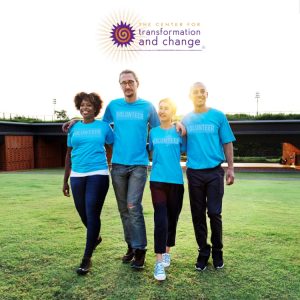Feeling Excluded In Your Inclusion Efforts?
“Help! I feel like I’m the only one at my organization striving for equity and inclusion. I’m frustrated and drained.”
Can you relate to those feelings of weariness?
I know you can! I’ve heard similar statements repeated numerous times, and this topic popped up again in one of my recent Q&A sessions.
You’ve got a handle around equity and inclusion, and you keep getting more requests to do diversity trainings…but it’s really not your job.
The problem is that no one else is stepping up to the plate and you feel stranded in your efforts.
Fortunately, there are ways to take the pressure off you while at the same time, motivating your organization to take on the task in a meaningful, dedicated way.
You Can’t Be the Only One Working on Equity & Inclusion
You could keep doing your best: performing your job and working towards equity inclusion on your own, putting together one-off trainings as best you can.
But get real. You can’t do this on your own!
If you keep doing the work because you’re aware of the need – but your organization hasn’t recognized its importance – then there’s no impetus for the organization to adopt any change.
Things will just keep going status quo until you say no – or worse, burn out.
And that is a no-win situation for you and the organization.
Your organization needs to make the commitment to infuse greater diversity, equity and inclusion into everything they do. But how can you help them get to this level of investment?
Create Positive Pressure in Your Organization
When the pressure is on, an organization is more likely to respond. You can work firmly and positively to create pressure so that dialogue – followed by meaningful change – can occur.
In order to carry a positive action, we must develop here a positive vision.
-Dalai Lama
I would encourage you to think about how to increase the pressure in your organization. This can be done several ways:
- Review any recent surveys conducted for employees and the customers you serve and note any patterns by group membership.
- Analyze any data about climate, satisfaction, the need for greater cultural competencies and leadership, as well as employees.
- Are patterns emerging that leaders need to know about regarding climate and culture dissatisfaction?
- If you don’t have access to much data, consider holding several focus groups by group membership to gather common GENERIC examples of microaggressions, patterns of negative differential treatment and experiences, etc.
 You may want to talk to your leaders about the competencies they think people in their organization possess – and what competencies they would like people to develop to better serve their increasingly diverse clients/customers and to create a more inclusive work environment.
You may want to talk to your leaders about the competencies they think people in their organization possess – and what competencies they would like people to develop to better serve their increasingly diverse clients/customers and to create a more inclusive work environment.
You can then ask: “On a scale of zero to ten, where do you think people currently are?”
Follow up with: “Is there any way that we can assess that?” Then meet with supervisors and review the diversity & inclusion dilemmas that they face and cite examples of the difficult situations that employees talk about.
All of these steps help create a greater sense of urgency to deepen the capacity of leaders and employees to infuse equity and inclusion into everything they do.
Take Positive Action to Create Meaningful Change
Now what?
You put the pressure on in your organization. Hopefully, through positive dialogue and meaningful insights, the topic of equity and inclusion has been brought to the forefront and your organization is committed to moving forward.
I’ve developed an assessment that I call the “Self-Assessment for Inclusion Practitioners” that can be useful to carry on the momentum.
Some folks choose to send this questionnaire to the entire department or organization so that people can reflect back, note their current skills, determine where they want to be, and gain the desire to close any gaps.
Congratulations! You now have more of an assessment of the situation to help build the case for why the organization needs to devote more resources by:
- Either investing in you getting more capacity, or
- Doing a train-the-trainer program, or
- Training more people so there isn’t just one or a few folks doing this as a second or third job
Now, you don’t feel so all alone. You feel you’re a part of an organization that is committed to equity and inclusion. You’ve created the momentum to keep going forward!
If you’d like to explore this topic further, I’ve got an intense 12-week training rolling out Feb. 1st, 2019, the Master Class for Inclusion Practitioners.
This program is designed to help develop the internal capacity of organizations so that they have the internal resources they need to partner with senior leaders to create more meaningful, sustainable change. Learn more and register here.




